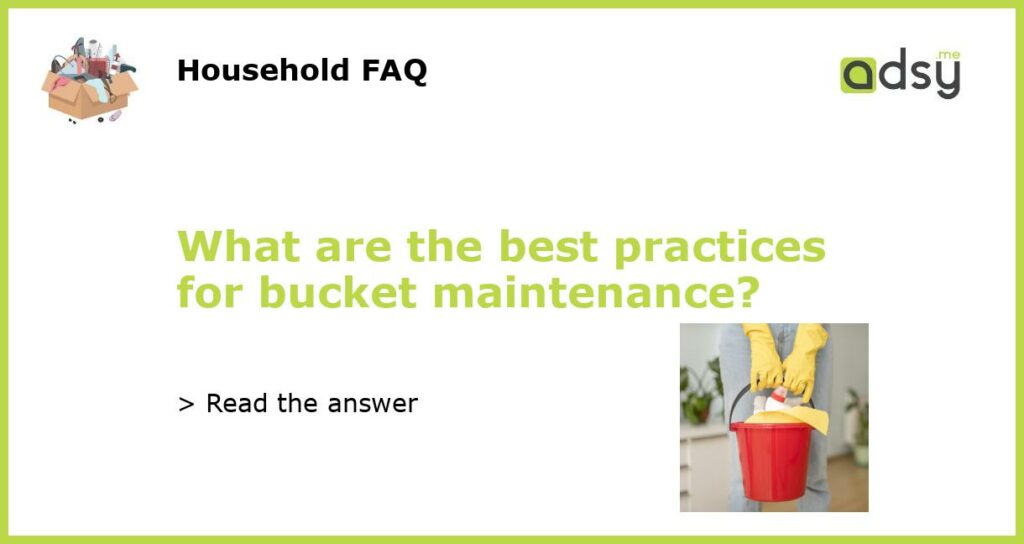Regular cleaning
One of the best practices for bucket maintenance is regular cleaning. Over time, buckets can accumulate dirt, debris, and even bacteria. Cleaning them periodically can help remove any contaminants and ensure that the buckets remain in good condition.
When cleaning buckets, it is important to use a mild detergent and warm water. Avoid using harsh chemicals or abrasive scrub brushes, as these can damage the bucket material. Gently scrub the bucket inside and out, making sure to remove any stuck-on residue.
After cleaning, rinse the bucket thoroughly to remove any soap or cleaning solution. Let it dry completely before using it again. This will help prevent the growth of mold or mildew and extend the lifespan of the bucket.
Proper storage
Another important aspect of bucket maintenance is proper storage. Storing buckets incorrectly can lead to damage or wear and tear over time.
When not in use, it is best to store buckets in a cool, dry place. Exposure to excessive heat or sunlight can cause the bucket material to degrade over time. Additionally, storing buckets in a dry environment will help prevent the growth of mold or mildew.
It is also important to stack buckets correctly to avoid any unnecessary pressure or strain. Stacking them too high or unevenly can cause them to become misshapen or damaged. Consider using shelving or racks designed for bucket storage to ensure they are stored safely.
Regular inspection
To ensure buckets are in good working condition, it is recommended to perform regular inspections. This can help identify any potential issues or damage that may require maintenance or replacement.
During inspections, check the integrity of the bucket material, handles, and any other components. Look for cracks, holes, or signs of wear and tear. If any damage is found, take appropriate measures to repair or replace the bucket.
Inspecting buckets regularly can help prevent accidents or failures during use. It is especially important for buckets that are used in demanding environments or for heavy-duty applications.
Safe handling
Safe handling practices are crucial for bucket maintenance. Improper handling can lead to damage, accidents, or injuries.
When using buckets, make sure to follow the manufacturer’s guidelines and any safety instructions. Do not exceed the maximum load capacity of the bucket, as this can cause it to buckle or fail under the weight.
It is also important to lift and carry buckets correctly. Use proper lifting techniques and avoid dragging or throwing them. This will help prevent any unnecessary strain or impact on the bucket.
Replacement when needed
Lastly, one of the best practices for bucket maintenance is knowing when to replace them. No matter how well you maintain your buckets, they will eventually wear out or become damaged beyond repair.
Regular inspections can help identify when a bucket is due for replacement. Signs such as cracks, holes, or a weakened structure indicate that it is time to invest in a new bucket.
Replacing buckets when needed will help ensure the safety of their use and prevent any potential accidents or failures. It is better to be proactive in replacing worn-out buckets rather than risking their integrity during use.






